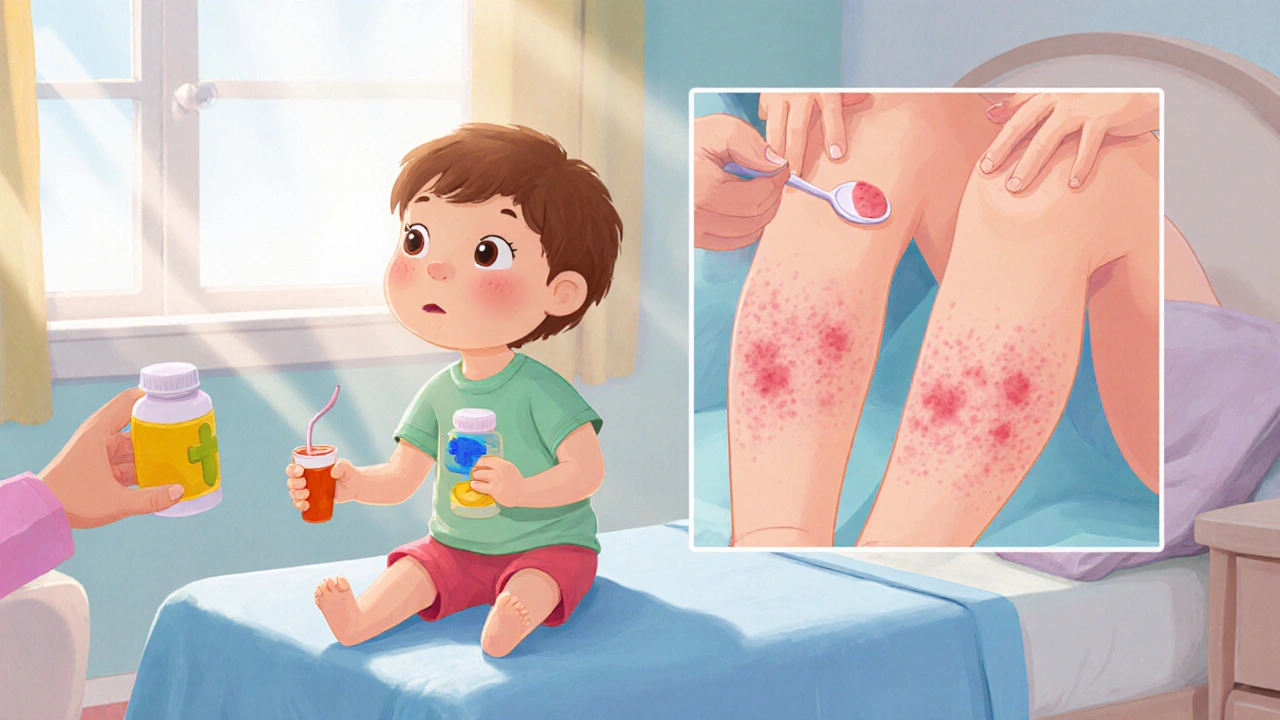Serum Sickness-Like Reaction – Signs, Causes & Management
When dealing with Serum Sickness-Like Reaction, a delayed immune‑mediated adverse reaction that mimics true serum sickness, typically appearing 1–3 weeks after drug exposure. Also known as SSLR, it often catches patients off guard because the symptoms surface well after they start a medication.
Key aspects of Serum Sickness-Like Reaction
One major umbrella under which SSLR falls is Drug Hypersensitivity, an exaggerated immune response to a medication that can range from mild rash to life‑threatening conditions. This type of hypersensitivity usually involves IgG antibodies that form complexes with the offending drug, and those complexes are the trigger for the next entity we’ll discuss.
The core mechanism driving SSLR is the formation of Immune Complex, aggregates of antigens and antibodies that deposit in tissues, activating complement and causing inflammation. When these complexes lodge in the skin, joints, or blood vessels, patients experience the classic triad of fever, rash, and arthralgia. In short, Serum Sickness-Like Reaction encompasses immune complex formation and requires a prior drug exposure to set the stage.
Not all drugs carry the same risk, but a notable group includes Antibiotics, medicines that fight bacterial infections and are among the most common triggers for SSLR. Agents like cefaclor, doxycycline, and certain sulfonamides are repeatedly cited in clinical reports. The posts on our site detail how cefaclor compares to other antibiotics and why doxycycline can cause a reaction similar to true serum sickness. Knowing which antibiotics are high‑risk helps clinicians avoid pitfalls.
Clinically, patients usually present with a feverish feeling, a red or urticarial rash, and joint pain that can be migratory. Some also report swollen lymph nodes or mild organ involvement, such as a transient increase in liver enzymes. The timing—often 7‑14 days after starting the drug—helps differentiate SSLR from immediate allergic reactions, which typically happen within minutes to hours.
Diagnosing SSLR involves piecing together the history and basic lab work. Low complement levels (C3, C4) and elevated ESR or CRP are common, reflecting ongoing immune complex activity. Skin biopsies are rarely needed but can show immune complex deposition. The key is to rule out other causes like actual serum sickness, lupus, or infections.
Management starts with stopping the offending medication. In many cases, symptoms improve within a few days once the drug is withdrawn. Supportive care includes antihistamines for itching, NSAIDs for joint pain, and short courses of systemic corticosteroids if inflammation is severe. Close follow‑up ensures that the reaction fully resolves and that no lingering organ damage remains.
Prevention hinges on thorough medication histories and patient education. When prescribing high‑risk antibiotics or other trigger drugs, clinicians should alert patients to the signs of SSLR and advise them to seek care promptly if symptoms arise. For patients with a known history of SSLR, alternative agents (e.g., using a different class of antibiotic) are preferred.
It’s also worth noting the relationship between SSLR and other immune‑mediated conditions. True serum sickness, which occurs after exposure to foreign proteins (like antitoxins), follows a similar immune complex pathway but tends to be more severe. Autoimmune diseases such as systemic lupus erythematosus can present with comparable symptoms, so a careful differential diagnosis is essential.
By understanding the triggers, mechanisms, and treatment steps for Serum Sickness-Like Reaction, you’ll be better equipped to recognize it early and act decisively. Below you’ll find a curated collection of articles that dive deeper into specific drugs, compare antibiotic options, and offer practical guidance for managing adverse drug reactions. Explore the posts to expand your knowledge and stay prepared for real‑world scenarios.

